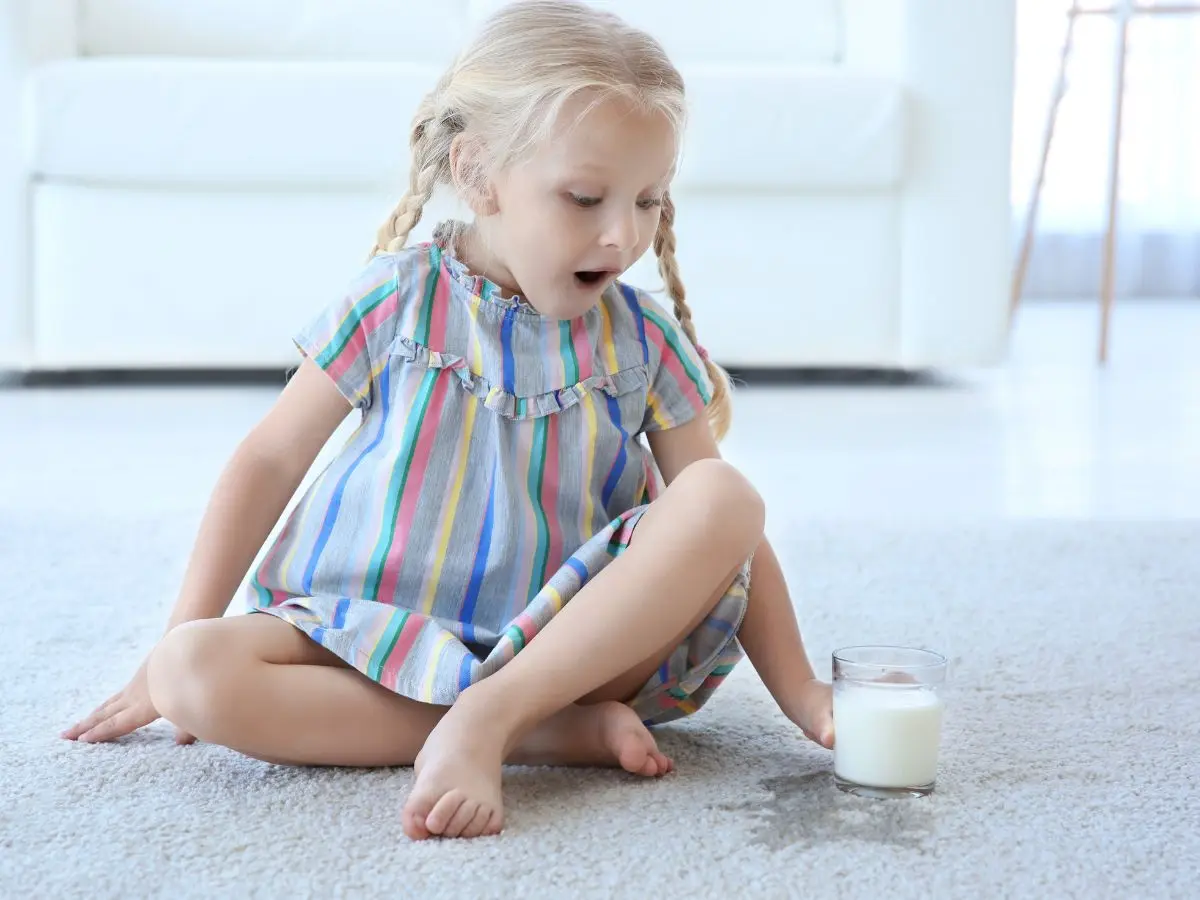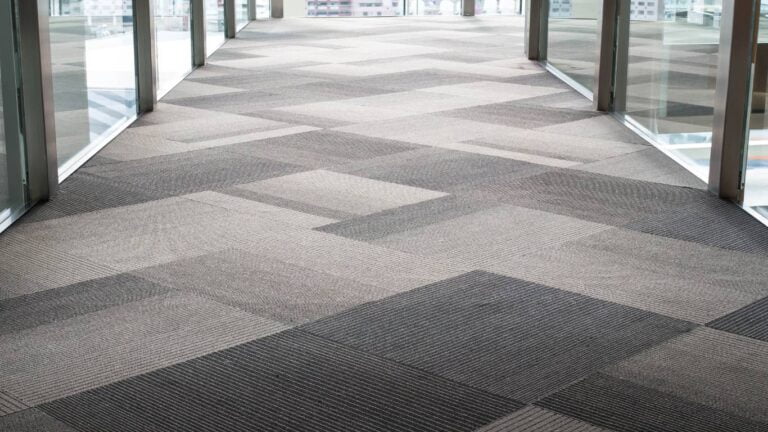Accidents happen, and knowing how to get milk out of carpet is essential for preventing stains and lingering odours. Whether it’s a fresh spill or a dried-up mishap, milk can be a challenging substance to remove due to its proteins, which can cause unpleasant smells and stubborn stains if not treated quickly and properly. The following guide provides a step-by-step approach to tackle milk spills on carpets, from initial blotting techniques to deep cleaning methods, ensuring you can restore your carpet to its former glory without a trace of the accident. With the right tools and a bit of patience, you’ll be able to handle milk spills with confidence and ease.
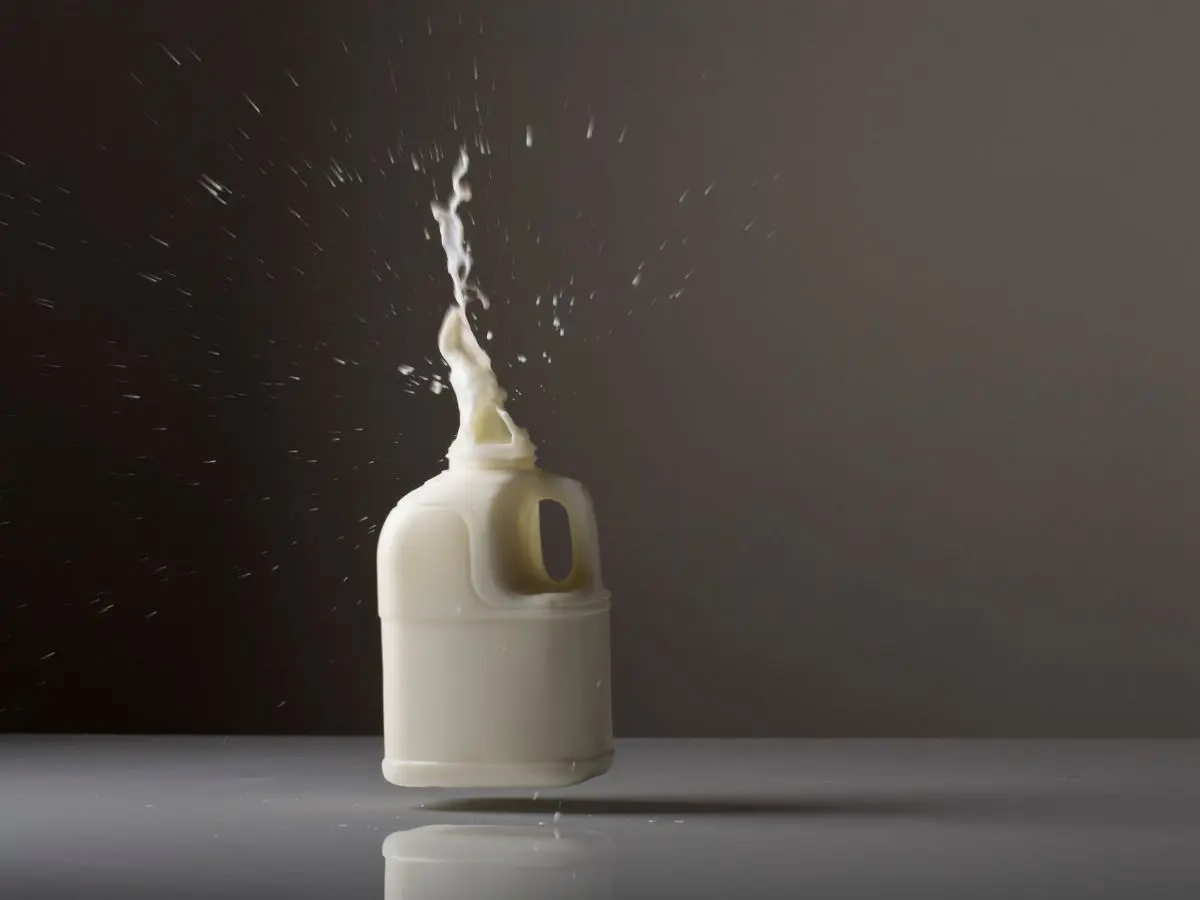
Initial Response to Milk Spills
Blotting Up Fresh Spills
When you accidentally spill milk on a carpet, it’s important to act quickly to stop the proteins in the milk from causing stains and bad smells. Start by soaking up as much of the spill as you can with a clean cloth or paper towel. Press down firmly on the spill to absorb the milk, rather than rubbing, which can push the liquid deeper into the carpet fibres.
If the spill has soaked into the underlayment, you’ll need to apply more pressure to draw the milk out from the padding beneath. If the underlayment remains wet, refer to our water damage restoration services.
Avoiding Common Mistakes
A typical mistake when cleaning milk spills is to scrub the area hard, which can actually drive the stain deeper into the carpet. Instead, after blotting, gently treat the stain with a sponge dampened with a mild dish detergent solution. It’s also key to avoid soaking the carpet, as this can cause mould growth and additional odours.
If you’re dealing with a dried milk spill, carefully scrape off as much of the dried residue as you can before moving on to damp cleaning methods.
Preparing for Cleaning
For a deeper clean, mix a few drops of gentle dish soap into a cup of cold water and stir lightly. Dip a clean sponge or soft cloth into the solution, wring it out well, and then dab the stain, starting from the outer edge and working towards the centre. Make sure to rinse the sponge or cloth frequently in clean water until no more milk is being absorbed.
NOTE: Always spot test and look at the manufacturer’s cleaning guide for the specific carpet you have. If you are unsure, call a professional stain removal service.
After cleaning, rinse the area with a cool, damp cloth and then dry it thoroughly with a clean towel. If a smell lingers, sprinkle a generous amount of baking soda over the area, leave it overnight, and vacuum it up the next day. For stubborn stains or smells, or if the spill is on upholstered furniture, you might want to call in a professional strain removalist, as they’re equipped to tackle such problems effectively.
Regularly airing out the room can also help clear any remaining milk odours.
Choosing the Right Cleaning Solution
The type of carpet you have—whether it’s synthetic or natural fibre—will guide you in choosing the cleaner you’ll need.
Homemade versus Commercial Cleaners
For synthetic carpets, a homemade solution can be created by combining one teaspoon of a clear liquid dishwashing detergent with one cup of lukewarm water. This mixture is suitable for addressing milk spills. For carpets made of natural fibres, a more diluted solution is recommended, using just ¼ teaspoon of the detergent with one cup of lukewarm water to preserve the integrity of the fibres.
Should the spill result in an odour or if the stain persists, a vinegar solution may be beneficial. For synthetic carpets, mix ¼ cup of white vinegar with ¼ cup of water. For carpets made of natural fibres, use one cup of white vinegar with two cups of water. Vinegar assists in lifting the stain and neutralising odours while removing any residual detergent that could attract dirt.
Safe Ingredients for Carpet
Clear dishwashing detergents are preferred for their lack of additives that could alter your carpet’s colour. White vinegar is also usually a safe, natural option for stain removal without leaving harmful residues.
Testing the Cleaner
It’s important to test the cleaning solution on an inconspicuous section of the carpet to ensure it won’t cause discoloration or damage. Apply a small amount of the solution to a hidden spot, wait, and then blot it away. Inspect the area to confirm there’s no negative impact on the carpet’s appearance. If the test is successful, proceed with treating the spill.
If a homemade solution is insufficient or undesirable, commercial carpet cleaners designed for milk stains are available. These should be tested in a hidden area as well, following the product’s instructions.
For persistent stains or uncertainty regarding a cleaning solution, consulting a professional carpet cleaner is advisable. They possess the expertise and equipment to remove stains without causing harm to your carpet.
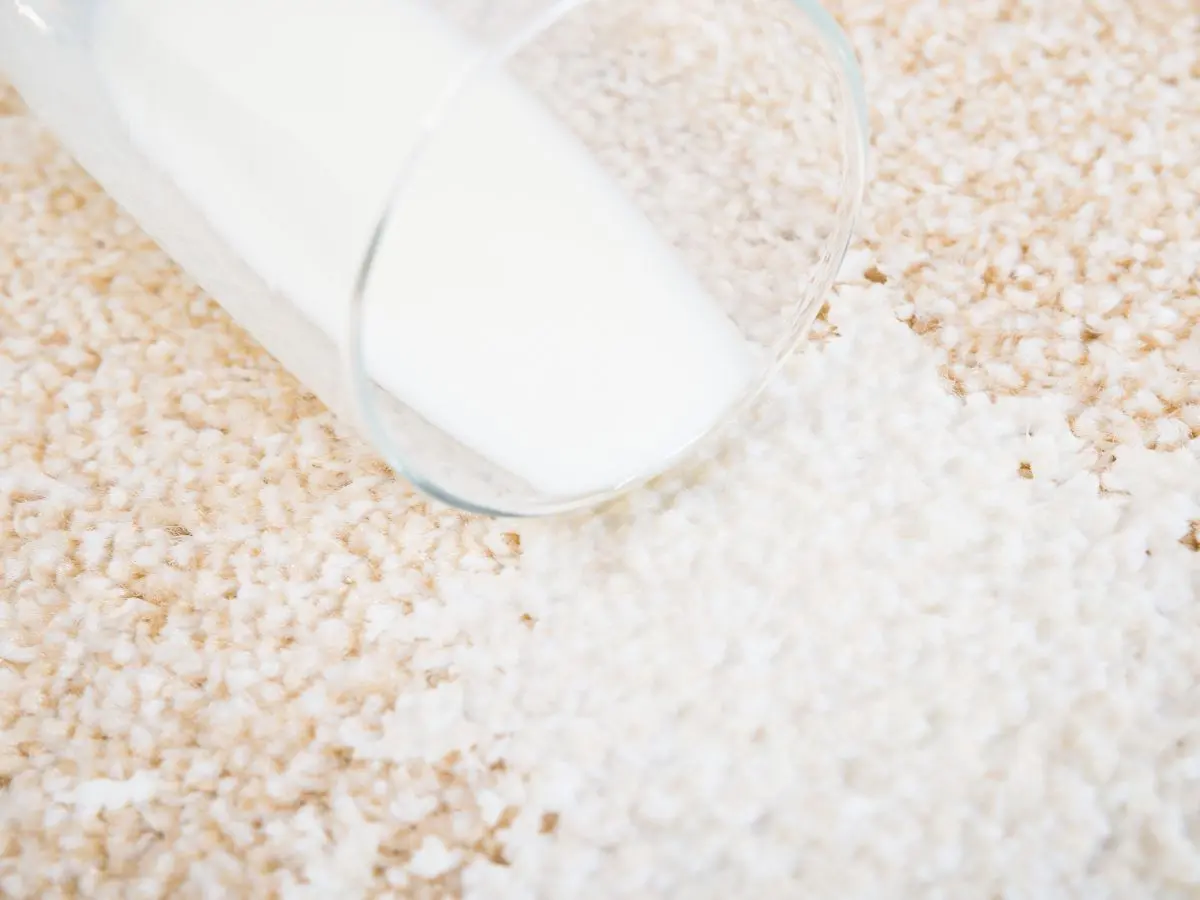
Deep Cleaning Milk Stained Areas
Step-by-Step Milk Stain Removal Process
Once you’ve absorbed the initial spill, prepare a solution of warm water and a small amount of mild washing-up liquid. Use a cloth dipped in this mixture to dab at the stain. Patience is key, as multiple applications may be necessary to diminish the stain.
For lingering smells, cover the area with baking soda for around 30 minutes. Baking soda excels at absorbing odours and moisture. Vacuum up the baking soda after the allotted time. If any milk has dried, gently remove it with a blunt knife, taking care not to harm the carpet. For remaining stains, moisten the spot with cold water and apply a paste made from washing powder.
Employ a toothbrush to work the paste into the stain, then rinse well. Should an odour persist, a solution of equal parts white vinegar and water can be sprayed on the stain and blotted dry. Vinegar, being a natural deodoriser, can help in neutralising stubborn smells.
If you can’t remove the odour yourself, get a odour control quote to get it professionally removed.
Utilising Enzymatic Cleaners
Enzymatic cleaners are particularly effective for challenging milk stains or odours. They contain enzymes that target milk proteins, which are responsible for the smell. Follow the manufacturer’s instructions for use, ensuring the product is suitable for carpet material.
When to Use a Steam Cleaner
For comprehensive cleaning, a steam cleaner may be necessary. This method is effective at eliminating bacteria, allergens, and dust mites. However, it should be reserved for extensive spills or when the carpet is due for a thorough cleaning. Professional-grade steam cleaners with rapid-dry technology can remove a significant amount of unwanted particles without over-wetting the carpet.
Always confirm that the cleaning products and methods are appropriate for your carpet type. Opt for eco-friendly and green-certified solutions to minimise harm to your household and the environment. If the stain proves too stubborn, consider hiring a professional carpet cleaner to avoid unnecessary trouble. They possess the expertise and equipment to handle difficult stains and achieve results that might be challenging with DIY methods.
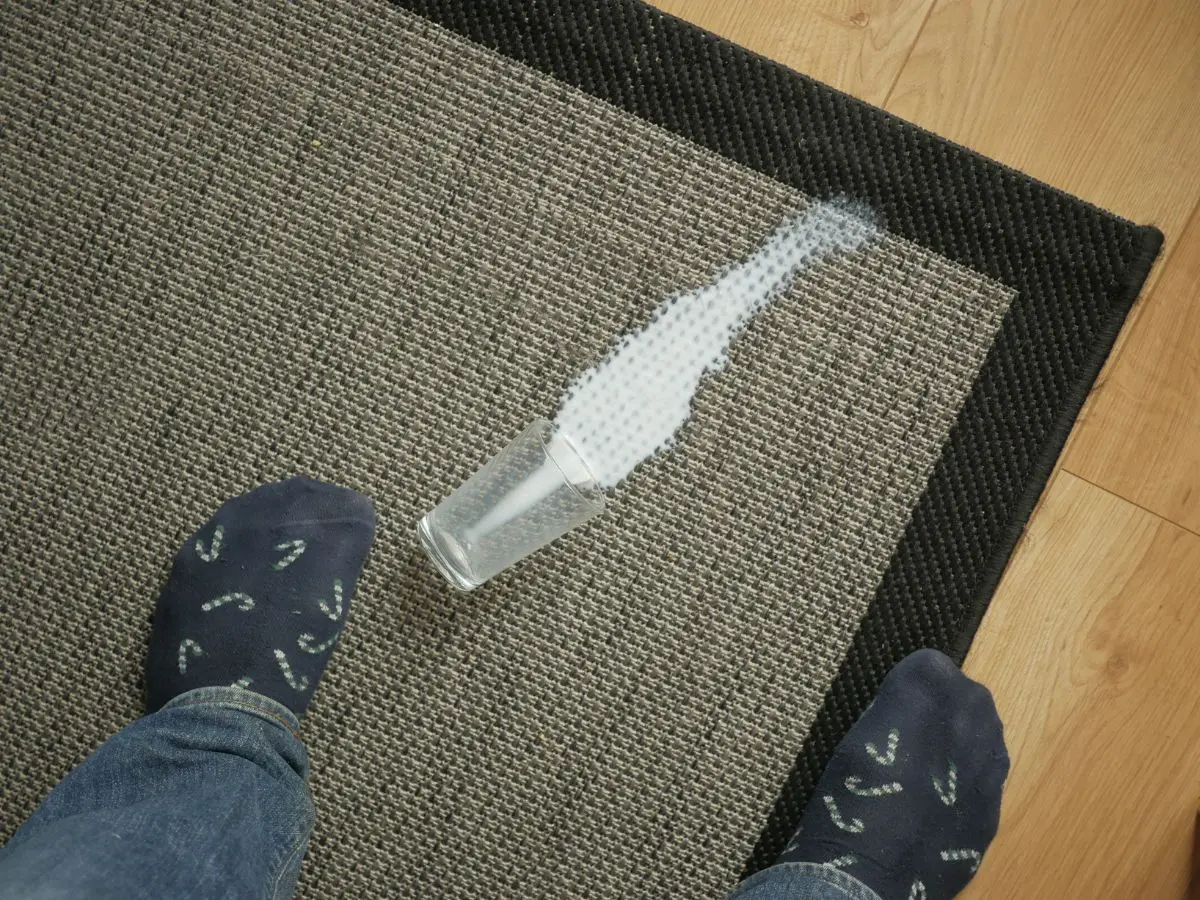
Milk Odour Elimination Techniques
Natural Odour Neutralizers
For a natural approach to eliminating milk odours, after absorbing the spill, cover the area with baking soda and allow it to sit through the night. The following day, loosen the powder with a soft brush before vacuuming it up, which will also help to remove any residual dampness from the carpet.
Another option is to use vinegar. For a passive approach, a bowl of vinegar can be placed near the affected area for a few days. Alternatively, directly apply vinegar to the stain using a spray bottle, let it sit briefly, then blot it away with a clean cloth. As the carpet dries, the vinegar scent will dissipate, leaving behind a fresher aroma.
Dealing with Persistent Smells
In cases where the sour odour remains, reapplying the vinegar may be beneficial, or place fresh coffee grounds in a container and sit it next to the affected area as an alternative.
Preventing Mould and Mildew Growth
To avert the growth of mould and mildew, which can exacerbate odours and pose health risks, ensure the carpet is not overly saturated during the cleaning process. After addressing the stain, rinse with cold water and blot to remove any remaining cleaning solution and moisture.
Utilising a steam cleaner can aid in sanitising the area and reducing the likelihood of mould and mildew. It’s crucial to ensure the carpet is completely dry post-cleaning to prevent further issues.
Maintaining your carpet with prompt spill management and periodic deep cleans can preserve its appearance and scent. If home remedies prove ineffective, seeking the assistance of a professional cleaner is recommended for persistent stains or odours. Testing any cleaning method on a concealed section of the carpet is also wise to prevent damage or discoloration.
Post-Cleaning Carpet Care
Drying the Carpet Thoroughly
Ensuring the carpet is dry after cleaning is crucial to prevent the growth of microorganisms such as mildew and moulds, which can lead to an unhygienic environment and produce unpleasant odours. To expedite the drying, spread towels over the damp areas of the carpet.
The towels will draw out the moisture from the carpet fibres. Walking over these towels can help press out the water more effectively. As they become saturated, replace them with dry ones.
Continue this process until the carpet feels dry to the touch. Additionally, check that the floor and carpet padding are also free from moisture to avoid further complications.
Restoring the Carpet Pile
Carpets may show signs of wear like indentations from furniture or a general flattening of the pile. To address these issues, you can use household items. Placing an ice cube on a carpet divot and allowing it to melt can rehydrate and lift the fibres.
A hairdryer can accelerate the melting process, but avoid high heat settings that could harm the carpet. After the ice has melted, use a stiff brush to gently coax the pile back into place.
For more stubborn areas, a damp cloth and a steam iron can rejuvenate the carpet pile. Place the cloth over the area, then press the iron over it for a few seconds, ensuring the iron doesn’t touch the carpet directly.
The heat and moisture will help lift the fibres. For minor damage, such as snags or small areas of flattened pile, carefully trimming the affected fibres or using a carpet rake can improve the carpet’s appearance. A carpet rake is also useful for fluffing up the pile and can be used in various directions to achieve the desired effect.
Ongoing Care to Prevent Future Stains
Maintaining a carpet’s appearance requires regular maintenance. Vacuuming is essential, as it removes dirt and prevents it from embedding in the carpet fibres, which can dull the appearance and increase the risk of staining.
Set the vacuum to the appropriate height to clean effectively without causing damage. Walk-off mats can capture dirt and moisture before they reach the carpet and should be replaced when worn.
Shifting furniture occasionally can help prevent the formation of divots and wear patterns. In high-traffic areas, area rugs can absorb the majority of foot traffic, thereby preserving the carpet underneath. Professional carpet cleaning is beneficial for ongoing care.
Professionals have the necessary equipment and expertise to deep clean carpets, removing allergens, bacteria, and deeply embedded dirt that regular vacuuming can’t reach. This not only enhances the appearance of your home but also promotes a healthier living environment. If you opt for a do-it-yourself approach, steam cleaning machines are available for rent or purchase.
However, it’s important to use them correctly and ensure no soap residue is left behind, which can attract more dirt. A combination of DIY cleaning and professional services can effectively maintain your carpets.
Expert Tips for Long-Lasting Carpet Freshness
Dealing with milk spills on your carpet needn’t turn sour. By taking swift action and using the right techniques, you can effectively prevent stains and odours from lingering in your fibres. Blot promptly, clean gently with suitable cleaners, and always dry thoroughly to safeguard your carpet’s condition. Remember, periodic maintenance with regular vacuuming and professional attention when necessary will keep your carpets looking and smelling fresh for years to come. For those particularly problematic spills, don’t hesitate to call upon the expertise of a professional cleaner to renew and revitalise your flooring. With these strategies in your cleaning arsenal, your carpets will remain a spotless foundation for your home’s comfort and style.

